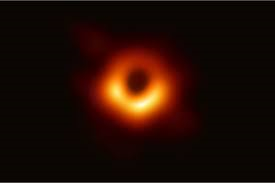Black holes of such mass should not even exist in our Galaxy,’ says scientist
Astronomers have spotted a huge stellar black hole in our galaxy, many times bigger than ever thought possible.
Scientists thought that such black holes could only reach about 20 times the mass of the Sun. But the newly discovered object is 70 times great, astronomers from the Chinese Academy of Sciences say.
As such, the discovery could re-write our understanding of how such vast, mysterious objects form, scientists say. Stellar black holes, so dense that light can’t escape from them, come about when a massive star collapses.
“Black holes of such mass should not even exist in our Galaxy, according to most of the current models of stellar evolution,” said Professor Liu.
“We thought that very massive stars with the chemical composition typical of our Galaxy must shed most of their gas in powerful stellar winds, as they approach the end of their life. Therefore, they should not leave behind such a massive remnant. LB-1 is twice as massive as what we thought possible.
“Now theorists will have to take up the challenge of explaining its formation.”
The vast object is in our own Milky Way galaxy, which is thought to contain 100 million such stellar black holes. The new one, known as LB-1, is 15 thousand light-years from Earth.
“Now theorists will have to take up the challenge of explaining its formation.”
The vast object is in our own Milky Way galaxy, which is thought to contain 100 million such stellar black holes. The new one, known as LB-1, is 15 thousand light-years from Earth.
Until recently, stellar black holes could only be spotted when they were seen eating up gas from a nearby star. As they do, an X-ray emission is thrown through the galaxy and towards Earth, where we can detect the collapsing star.
But most of the stellar black holes in our galaxy aren’t eating stars, and so we can’t see them this way. That means that despite the huge number thought to exist in our Milky Way, we have only ever been able to properly identify and understand a few of them.
To learn more, the researchers on the new paper looked for stars that appeared to be getting pulled towards the gravity of an invisible object. This was first suggested as a way of observing space in the 18th century, but has only recently become possible.
After using that technique, scientists used more observations to learn about the stellar black hole they thought they had spotted. They were shocked by what that found, showing that a star eight times heavier than our own Sun was orbiting the vast black hole every 79 days.
“This discovery forces us to re-examine our models of how stellar-mass black holes form,” said LIGO Director Prof. David Reitze from the University of Florida in the U.S.
The Independent
 Lebanese Ministry of Information
Lebanese Ministry of Information



